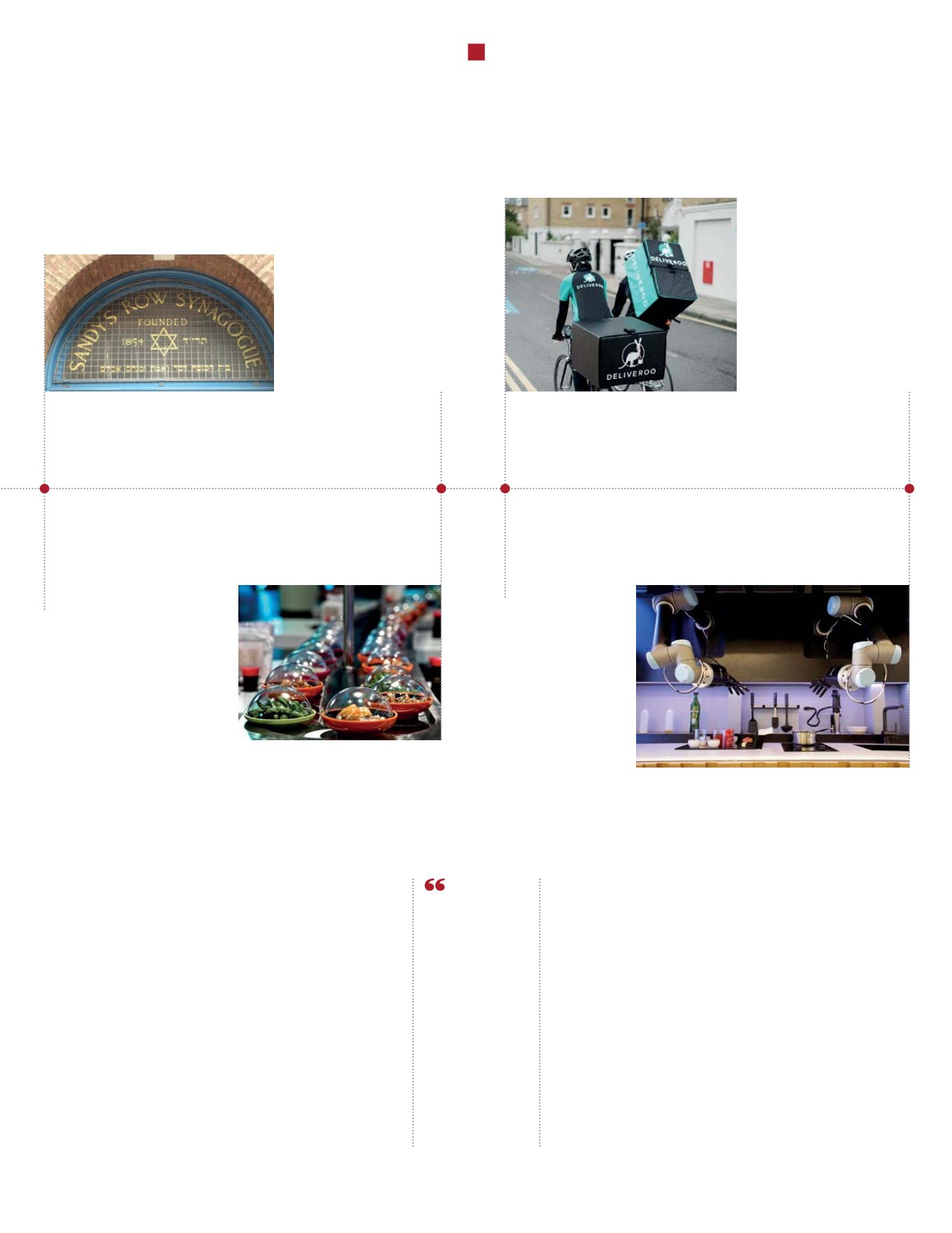

statement surely reflected what was already a bygone era.
Modern London, now home to over 270 nationalities
and 300 different languages, stands near the top of the
global list for foodies; certainly for diversity, if not quite
reaching NYC’s heights for grandeur and experience.
That being said, the future of London dining has the
potential to look very different. As time comes at more of a
premium for Londoners and we spend more hours working,
restaurant owners are looking to new ways of providing
fast, affordable and consistent food to their customers.
Traditionally, hospitality owners have been able to maintain
lower operational costs through the use of non-British
employees. However, with Brexit looming and 38% of
London’s hospitality staff being from European countries,
restauranteurs have expressed concern. As with most things,
London’s strength is that it has embraced the best global
trends, rather than necessarily inventing its own. 48% of our
food is imported, and this presents further pricing challenges.
Brick Lane was
famous for Jewish
chicken soup and
matzo balls
First Yo! Sushi
opened in Soho
Automation and
robotics the future
of the restaurant
industry?
Deliveroo app
launched in
London
1898
1997
2020+
2013
London’s
strength is
that it has
embraced the
best global
trends,
rather than
necessarily
inventing
its own
Automation may have a role to play in reducing
costs, and lifting experience. Yo! Sushi might seem like a
gimmick, but beyond conveyors, we are adopting other
eastern trends such as Keuken’s vending machine meals
and Café X’s robot baristas. Meanwhile the huge rise in
delivery apps, provides ways to enjoy restaurant quality
meals in the comfort of your own home. Whether this
creates new customers or cannibalises existing revenue and
margins remains to be seen. Either way, the proliferation of
deliveries, requires new and better ways to manage both
the interface with the restaurant, and also the way in which
the product arrives in your managed block.
New service models reflecting our fast-paced life are
also emerging. These range from the high velocity grab and
go lunchtime style offered by Pret, to the counter-order
services promoted by Nandos and GBK. Whilst presented
as putting the customer in charge, does this really mask
resourcing shortfalls behind a casual appearance?
CUSHMAN & WAKEFIELD
37
PAST, PRESENT, FUTURE


















